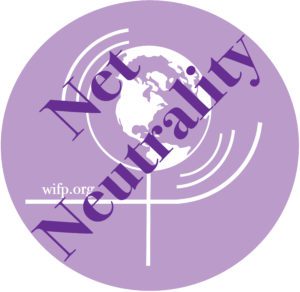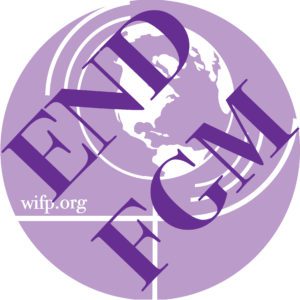8 Characteristics
The Eight Characteristics of Women’s Media that Are Different in our Media from Men’s: the Five Categories of Women’s News
Reprinted from The Quill Magazine article entitled “Women News” (May 1991 issue, pp. 36-37) by Dr. Donna Allen.
At the risk of sounding like a health magazine ad – seven ways to prevent cancer of the elbow and four reasons why you should brush your teeth at 8 p.m. – I will answer The QUILL editor’s question about the difference between women-owned and men-owned news media by providing eight characteristics of women-owned media and five categories of women’s news not reported in the mass media.
One can spot the eight characteristics of women-owned-and-run media by sampling any half dozen of the over 700 women-owned periodicals or other media. We discerned these characteristics at the Women’s Institute for Freedom of the Press during our fifteen years of publishing Media Report to Women and the annual Directory of Women’s Media.
You will be amazed to discover so many hundreds of periodicals you never heard of, full of information you didn’t know you didn’t know — replete with characteristics quite different from what you always thought was journalism. You’ll wonder where you have been – you’ve been in the land of male-dominant media, which doesn’t tell you there is any other kind. Simone de Beauvoir said, “Representation of the world, like the world itself, is the work of men; they describe it from their own point of view, which they confuse with the absolute truth.”
Only a few illustrations of each characteristic can be quoted here, but more examples in depth can be found in The Development of Communication Networks Among Women, 1963-1983 by Dr. Martha Leslie Allen (UMI, 1988). Three of the eight characteristics relate to journalistic practice.
1) The conventional journalism of male-owned media reports news in the third person. Women’s journalism reports its news in the first person, allowing the newsmakers to speak for themselves. Both claim their styles result in greater accuracy. A few examples: “When we publish material about the experience of members of groups which are targets of discrimination in our society, the author must be a member of the group. We feel that it is important for members of each group to speak for themselves rather than having those who don’t share their experience speak for them.” (Broomstick, A Bi-monthly National Magazine By, For & About Women Over Forty). “Women worldwide are claiming the space to tell our own stories, define our own issues and agendas, create our own organizations and networks, develop our own approaches to mobilization and political action.” (Women in Action).
2) Men tend to define “news” as conflict and violence — fights (political, economic, physical), murders, suicides, floods, fires, and catastrophes of all kinds. Attacks and name-calling usually guarantee a well-attended press conference and subsequent news coverage. Women-owned media define news differently, as these commonly-stated editorial policies indicate: “Women of Power seeks to generate harmony and interconnection by taking care that our words and images nurture and affirm our wholeness . . . It is therefore our policy . . . to refuse to print works which are racist, classist, homophobic, anti-Semitic, ageist, culturally elitist, or which in any other way further divisions among people . . . ” (Women of Power). Our aim is “to make every interview informational rather than adversarial.” (Women’s Radio at WMFO). “The challenge to all of us, but most particularly those in film and television, is to transform the violent macho role models . . . creating media heroes and heroines who are intelligent instead of belligerent, cooperative rather than combative, nurturing rather than destructive,” (Mary Batten in Women in Film newsmagazine).
3) Male-owned media claim a journalistic goal of “objectivity.” The journalistic goal of women’s media is the “effective use of media as an instrument of change.” (Echo on Sauti Ya Siti). “More than a simple conveyor belt of information, it has also served as an agent for change . . .” (Women of Europe).
The next two characteristics relate to structure.
4) Women-owned media are nearly all non-hierarchical. “The newspaper in its very structure will attempt to avoid the pitfalls of masculine-oriented models of hierarchical organizations. We will have no intellectual elite on top with peons on the bottom. We will all share in reading what goes into the paper, we all share in the menial labor.” (Second Coming). “We are committed to . . . non-hierarchical relationships, and valuing diversity. There are no editors or review board members; the material for each issue is reviewed, selected and prepared by local Websters (members of the web).” (Cassandra, Radical Feminists Nurses News Journal).
5) Women’s media would replace the competitiveness of male media’s “scoops” and financial rivalry with cooperation. “Aurora could not have put together our insert without the help of our sister publications, Off Our Backs and Up From Under. We encourage you to subscribe to these feminist journals along with Aurora..” (Aurora)
6) Women-owned media tend toward a common carrier concept of journalistic function. “WIN News is a world-wide open communication system by, for and about women of all backgrounds, beliefs, nationalities, and age groups.” (Women’s International Network News). “Sojourner was founded in 1975 on the principle of offering an open forum for women — a space where women could speak freely about their concerns as women . . . on any subject, so as to encourage the widest possible diversity in submissions.” (Sojourner).
7) The greatest difference from male-owned media is women’s characteristic analysis of mass media as hostile to women. “The mass media portrays feminists as sadistic trigger-happy bull dykes . . . This image is intended to turn people off.” (Plexus, West Coast Women’s Press). “We aim to balance the ‘freakish women’s libber’ coverage (presented by media coverage.)” (News Sheet). “Men are the gatekeepers of power . . . of the dominant ideology . . . The making and shaping of cultures — the systems of thought, belief, values, attitudes, and the symbols and images by which these are expressed — are the works of men . . . and serve to legitimize male domination.” (Mediterranean Women, KEGME Review).
8) The eighth difference is in content. “Women’s newspapers report all the news the male press finds unfit to print; it frames women’s issues in a different way than the straight press, it reports what’s going on in the women’s movement . . .” (Susan Cavin in Womanews, NY). “The Women’s Movement isn’t dying, you just haven’t heard any news coverage of women on television . . . It’s just not getting any news coverage.” (Womenews, Cleveland). “For 14 years WIN News has been reporting the often disturbing facts about and from women all over the world — information that has been entirely ignored . . . and is still passed over as irrelevant by the international press.” (WIN News).
 The Women’s Institute for Freedom of the Press
The Women’s Institute for Freedom of the Press
